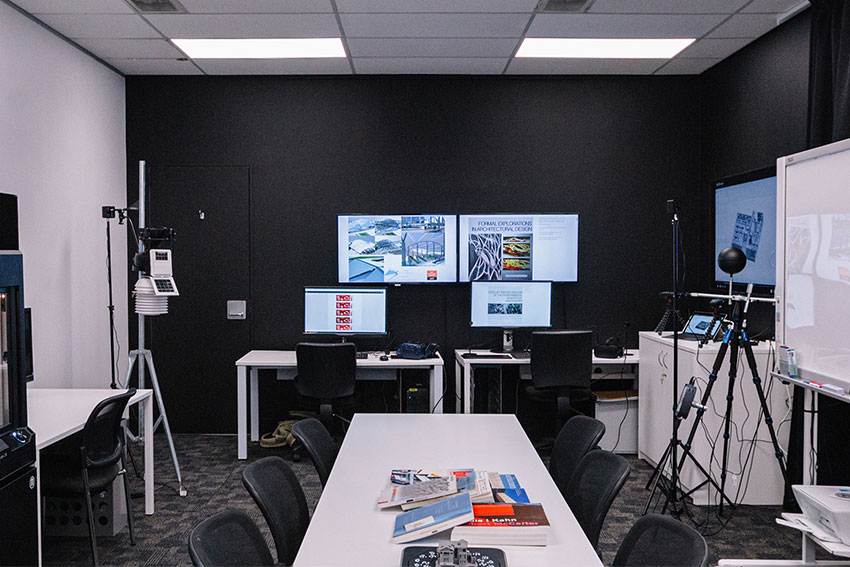How do buildings affect mental health?

How do you feel when you are walking through the city centre area in Auckland to reach your office, school or home? How do your feelings change after spending hours working in your office or sitting in a park?
Three researchers from AUT are asking these questions, sharing real-life examples and putting forward how the built environment largely influences citizens’ mood, senses and well-being. They seek to present their line of thinking about the future of buildings and urban areas, expressing the need for more robust attention to the design-based circumstances for creating healthier and more productive environments.
Drs Ali and Amirhosein Ghaffarianhoseini are architectural designers and are also serving as directors of a newly established Architectural Engineering Lab, while Dr Zohreh Doborjeh, a cognitive psychologist, oversees an Electroencephalogram (EEG) Lab at AUT. They believe our surrounding environments, ranging from home and office to our neighbourhoods and city centre areas, can significantly impact our health without us being fully cognizant of it, as proven and reported in their recent and ongoing research.
But, are existing buildings and urban environments designed in accordance with the necessary parameters to uplift our well-being? The faculty behind this new lab encourage both professional bodies and government sectors to pay more attention to the negative health-related impacts of built environments, and they are also proposing practical solutions.
Should we re-define the way we are designing our built environment? Dr Amirhosein states: “While in recent years, many researchers have started to undertake investigations regarding the impacts of our buildings and urban areas on the physical health of users, mental health has not been widely emphasized. In professional practice, architectural design is always considered an iterative process that requires multifaceted consideration of numerous parameters. This process can be further optimized through its incorporation with neuroscience to explore the short and long-term psychological effects of our proposed designs.
“We want to live and work in houses, offices and urban areas that are efficiently designed to elevate our mental health towards a happier and more pleasant lifestyle.” In the same vein, Dr Ali articulates that “although the notion of neuro-architecture has been around for a while, scholarly studies and professional investigations on how it can be translated into meaningful design solutions in the industry-related context of buildings and cities are limited.”
He continues, “Using Auckland city as a living lab, we are currently exploring why and how buildings, walkways and outdoor spaces affect citizens’ well-being, particularly from mental health perspectives, through reading brain responses.”
Incorporating both neuroscience and architectural design, AUT researchers are examining at what magnitudes architecture and urban design can negatively affect Aucklanders on a daily basis resulting in increased stress and anxiety levels, reduced productivity and focus and several other symptoms and indicators. They believe their ongoing projects will embrace huge potential and will soon receive more support from government sectors.
Using Electroencephalogram (EEG) and functional Magnetic Resonance Imaging (fMRI) technologies during extensive rounds of experiments, they attempt to psychologically assess the performance of built environments and, ultimately, identify new design guidelines.
Dr Zohreh notes,“Neuroscience has significant potential to be applied in architectural and urban practices to scrutinize the design quality and performance of environments from the lens of psychology. It is now technically feasible to measure and analyse the brain responses of users and interpret these readings to develop design-related solutions.
“For instance, by simulating building interiors and subtly changing variables such as colour, light, smell, sound, or temperature, the engagement of the brain in positive-negative responses is identified in order to create the best experience within that specific environment. Providing a platform for neuroscientists and psychologists to collaborate with architects and urban designers during early design stages of built environments is essential to highlight users’ mental health as a major concern.”
In addition to their current research, and moving on from design to architectural science, there is also ongoing research projects in collaboration with Associate Professor Dr Nicola Naismith, currently being performed by PhD student Sameh Azzazy. This study concentrates on the relationships between the environmental performance of buildings (focusing on indoor thermal comfort and air quality) and users’ mental well-being. Drs Ali and Amirhosein Ghaffarianhoseini and Dr Zohreh conclude that the full potential of applying neuroscience for laying out our built environments has not yet been entirely realised, but can totally revolutionize the design and performance of our future cities.
Useful links:
Study architectural engineering at AUT
Knowledge Engineering and Discovery Research Institute
AUT Architectural Engineering Lab
First appearance
This story was first published on Architecture Now. Read the original piece here.